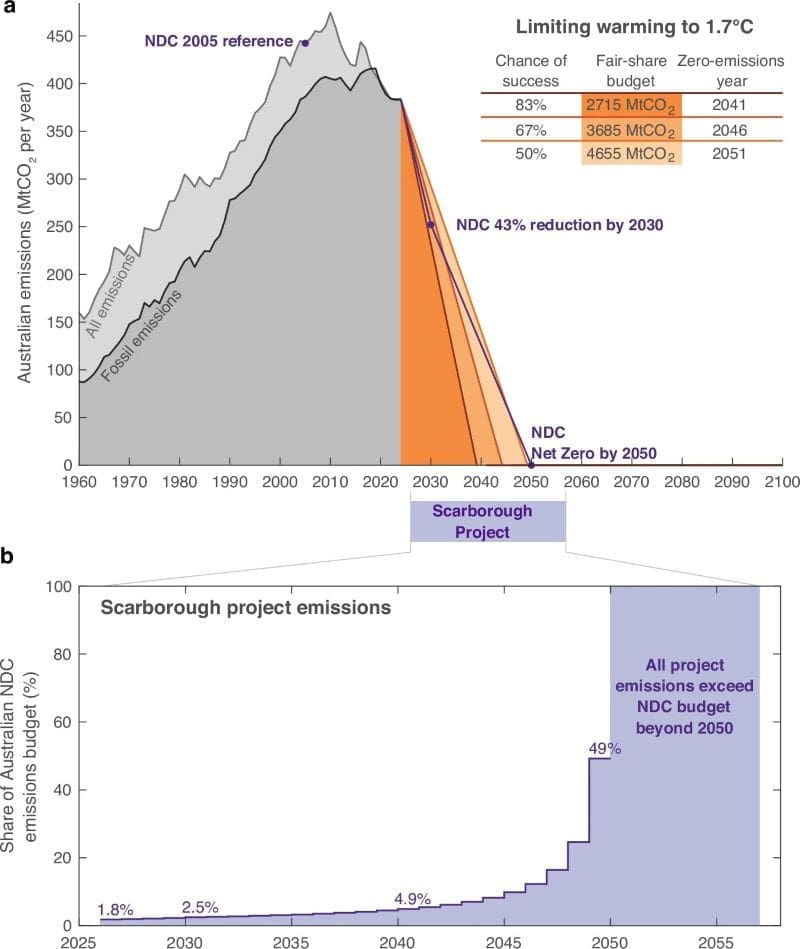Explore the latest insights from top science journals in the Muser Press daily roundup (October 14, 2025), featuring impactful research on climate change challenges.
In brief:
2023 ocean heatwave ‘unprecedented but not unexpected’
During the heatwave, temperatures in the shallow seas around the UK (including the North Sea and Celtic Sea) reached 2.9 °C above the June average for 16 days.
While unprecedented since observations began, the study warns that rapid climate change means there is now about a 10% chance of a marine heatwave of this scale occurring each year.
The June 2023 marine heatwave significantly disrupted phytoplankton blooms. Although its full impact on marine ecosystems remain to be assessed, such heatwaves can stress marine species and increase concentrations of bacteria that can harm humans.

The study was carried out by the University of Exeter, the Met Office and Cefas.
“Our findings show that marine heatwaves are a problem now – not just a risk from future climate change,” said Dr Jamie Atkins, who led the study during his PhD at Exeter, and is now at Utrecht University.
“The unprecedented nature of the June 2023 event put European marine heatwaves firmly in the public consciousness. However, our study shows that – in today’s climate – such events should not be unexpected.”
Co-author Professor Adam Scaife, of the University of Exeter and Head of Long Range Forecasting at the Met Office, said: “This is another example of how steady climate warming is leading to an exponential increase in the occurrence of extreme events.”
The study used a large number of climate model simulations to assess the likelihood of heatwaves at the June 2023 level or above.
It focussed on two locations:
- In the Celtic Sea – off the south coast of Ireland – the annual chance of such a heatwave rose from 3.8% in 1993 to 13.8% now.
- In the central North Sea, the chance rose from 0.7% in 1993 to 9.8% now.
Previous research showed that the June 2023 marine heatwave also contributed to record-breaking temperatures and increased rainfall over the British Isles.
Explaining this, Dr Atkins said: “Warmer seas provide a source of heat off the coast, contributing to higher temperatures on land. Additionally, warmer air carries more moisture – and when that cools it leads to increased rainfall.”
The team say more research is now needed to investigate the impacts of marine heatwaves in European North-West shelf seas.
***
Dr Atkins’ work was funded by the Natural Environment Research Council (NERC) via the GW4+ Doctoral Training Partnership.
Journal Reference:
Atkins, J.R.C., Scaife, A.A., Graham, J.A. et al., ‘Recent European marine heatwaves are unprecedented but not unexpected’, Communications Earth & Environment 6, 792 (2025). DOI: 10.1038/s43247-025-02802-3
Article Source:
Press Release/Material by Alex Morrison | University of Exeter
‘Far from negligible’: New Australian fossil fuel site will have major impact on people and the planet
The level of emissions from the Scarborough project – with liquified natural gas production from the site expected to start in 2026 and continue for at least the next 31 years – will cause, on average, 0.00039 degrees Celsius of additional global warming.
The findings reinforce how each new investment in coal and gas extraction causes long-term environmental and social harm. The research provides a framework for scientists to quantify the consequences of additional greenhouse gas emissions from each new individual fossil fuel project.
The researchers argue that although this level of additional warming may seem small on paper, it would have major consequences for Australia and the world.

According to the research findings, published in the journal npj Climate Action, an increase of 0.00039 degrees Celsius in additional global warming would:
- Expose an additional 560,000 people around the world to unprecedented heat;
- Leave an additional 356,000 people globally outside the human climate niche (this is defined as the climate conditions in which human societies have historically thrived and is defined by the distribution of the human population with respect to mean annual temperature);
- Cause an additional 484 heat-related deaths in Europe and 118 additional lives lost in Europe by the end of this century under a middle-of-the-road emissions pathway;
- Cause additional thermal exposure in the Great Barrier Reef (GBR) that would result in an additional 16 million coral colonies lost in every future GBR bleaching event, which would occur with more frequency due to global warming as a consequence of emissions from the Scarborough project.
“The majority of Australia’s new fossil fuel projects describe their anticipated greenhouse gas outputs as ‘negligible’ in the context of global emissions and claim they’re unable to measure contributions to global warming, while also ignoring expected impacts,” study co-author Professor Sarah Perkins-Kirkpatrick, from ANU, said.
“The site’s developers claim it is not possible to link greenhouse gas emissions from Scarborough with climate change or any particular climate-related impact given that the estimated emissions associated with Scarborough are negligible in the context of existing and future predicted global greenhouse gas concentrations.
“But our research shows emissions output from this new project is far from negligible.”
The researchers calculated that by 2049, the anticipated Australian emissions from the Scarborough project alone will comprise almost half (49 per cent) of Australia’s entire annual CO₂ emissions budget.
Co-author Dr Nicola Maher, also from ANU, said that beyond 2050 all emissions from the Scarborough project would require durable CO₂ removal from the atmosphere if Australia is to meet its emissions reduction targets.
“That would require a huge increase in the effectiveness and scale of carbon capture and storage technology. For example, in 2023, human activities to move carbon dioxide from the atmosphere into storage amounted to only 0.04 million tonnes of carbon dioxide globally, which is equivalent to just 0.6 per cent of the planned annual Australian emissions from the Scarborough project,” Dr Maher said.
Dr Maher said the research provides a science-based foundation that can be employed by companies and governments in quantifying the consequences of fossil fuel production and use, and in assessing whether projects fall within acceptable levels of environmental and societal risk.
Associate Professor Andrew King, from the University of Melbourne, said: “These findings contrast sharply with claims that individual fossil fuel projects will have negligible impacts. In this case study alone, it is shown that the additional warming caused by carbon dioxide emissions from the Scarborough project will persist for multiple decades to centuries and cause long-term environmental and social impacts.”
The researchers employed a robust methodology known as the Transient Climate Response to CO₂ Emissions (TCRE) to calculate the contribution of these emissions to global warming. The TCRE is a major tool of the Intergovernmental Panel on Climate Change (IPCC) and works using a combination of our scientific understanding of the earth system, direct observations, and climate model simulations.
Journal Reference:
Abram, N.J., Maher, N., Perkins-Kirkpatrick, S. et al., ‘Quantifying the regional to global climate impacts of individual fossil fuel projects to inform decision-making’, npj Climate Action 4, 92 (2025). DOI: 10.1038/s44168-025-00296-5
Article Source:
Press Release/Material by Australian National University (ANU)
Housing type linked to cardiovascular death risk in older adults in Japan
A 6-year cohort study conducted by researchers from Japan, comprising nearly 39,000 older adults found that people living in rental flats and owner-occupied detached houses face higher risks of cardiovascular death compared with those in owner-occupied flats. The study attributes to the increased risk to colder, less stable indoor temperatures in these housing types and suggests that improving housing quality to address these issues could lower cardiovascular mortality, particularly among men.
Where we live can shape how long we live. Growing evidence shows that the quality of housing affects the risk of cardiovascular diseases (CVDs). In 2018, the World Health Organization (WHO) issued the Housing and Health Guidelines, noting that CVDs, such as stroke and heart disease are more common in cold homes. The report emphasized that exposure to cold raises blood pressure, a known contributor to CVD risk. In Japan, the Cardiovascular Disease Clinical Practice Guidelines released in 2024 also recognized housing as a social environmental factor influencing cardiovascular health.

Now, researchers at Institute of Science Tokyo (Science Tokyo), Japan, provide further evidence of clear differences in CVD risk depending on housing status. In a study published in BMJ Public Health, they report that people living in rental flats and owner-occupied detached houses face a higher risk of death from CVD, compared with those in owner-occupied flats.
The study was led by Assistant Professor Wataru Umishio from the Department of Architecture, Science Tokyo, in collaboration with colleagues from Science Tokyo’s Graduate School of Medical and Dental Sciences, Hamamatsu University School of Medicine, Nihon Fukushi University, and Chiba University.
The findings are based on a 6-year cohort study of 38,731 older adults in Japan, with an average age of 73.6 years. Researchers linked participants’ housing and tenure types – including owner-occupied detached houses, owner-occupied flats, rental detached houses, and rental flats – to official records of deaths from cardiovascular causes such as acute myocardial infarction, arrhythmias, heart failure, and strokes.
One explanation, the researchers note, lies in structural differences between housing types that affect indoor thermal conditions. Detached houses, exposed to the outdoor environment on all sides, are more vulnerable to low and fluctuating indoor temperatures, unlike flats, which are insulated by neighboring units. Previous studies in Japan have shown that detached houses tend to have cold and unstable indoor temperatures, both of which can raise blood pressure and increase its variability.
Men were most at risk, likely because they generally have higher blood pressure than women. According to the Japanese Society of Hypertension Guidelines, men in their 60s and 70s tend to have higher systolic blood pressure than women of the same age.
Poor housing quality in rental flats was identified as another factor. Many rental properties have inferior insulation, partly due to the “split incentive” problem, where landlords have little motivation to invest in improvements that mainly benefit the tenants. National surveys show that just 15% of rental homes in Japan have double window sashes or double-glazed windows, compared with 38% of owned homes.
The researchers suggest that improving insulation and keeping indoor temperatures above the WHO-recommended 18 °C could lower cardiovascular deaths, particularly among older adults and men. For Japan’s aging population, safe and warm homes are a critical part of public health.
“Such initiatives for promoting the adoption of high-quality housing could contribute not only to improving cardiovascular health but also to enhancing planetary health by mitigating climate change through reduced energy consumption,” says Umishio.
Journal Reference:
Umishio W, Kiuchi S, Ojima T, Saito M, Hanazato M, Aida J., ‘Combination of housing type (detached houses vs flats) and tenure (owned vs rented) in relation to cardiovascular mortality: findings from a 6-year cohort study in Japan’, BMJ Public Health 3, 2: e003073 (2025). DOI: 10.1136/bmjph-2025-003073
Article Source:
Press Release/Material by Institute of Science Tokyo (ISCT)
Featured image credit: Gerd Altmann | Pixabay




